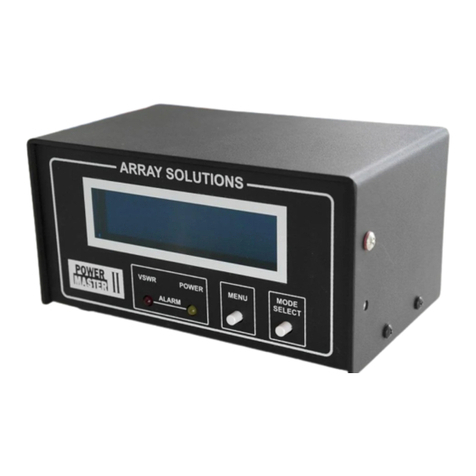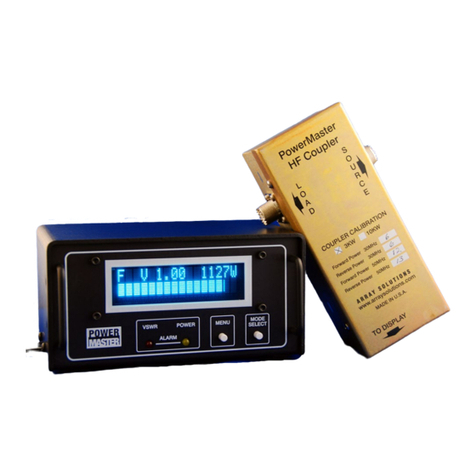
Antenna Analyzer AIM4170 page 3
Quick Start
Loading the Software:
The AIM4170 software does not require a formal installation procedure. It does not
interfere with any other programs or the registry on your computer.
1) Create a folder or a subfolder on any convenient hard drive.
For example, “C:\AntennaAnalyzer”.
2) Insert the CD labeled “AIM 4170” in the CD drive.
3) Copy all the files on the CD to the folder you just created for the antenna analyzer
software and documentation.
4) The file labeled “AIM_xxx.exe” is the executable file. It is ready to run without going
through an installation process. When later versions of the program are released, the
number “_xxx” will be different. All versions of the antenna analyzer program can reside
in the same folder at the same time. The older programs with the lower numbers will not
interfere with the newest version, so they do not have to be deleted.
If you want to make a shortcut icon for your desktop, right click on the AIM_xxx.exe file
(or the latest version) and select “create shortcut” from the dropdown menu. Drag the
shortcut to your desktop or task bar.
When the files are loaded from a CD, they may be flagged as “read-only”. In order for
the calibration and initialization data files to be updated properly, the “read-only” flag
must be cleared. Highlight all the files in the folder by pressing control-A and then
right-click to see the properties of the files. If the “read-only” property box has a
checkmark, uncheck it and then click “Apply”. This will remove the read-only flag on all
the highlighted files. None of the files in the folder need to be read-only.
Hardware Connections:
Connect one end of the RS232 cable to the antenna analyzer and the other end to COM1
on your PC. If you want to use a different COMM port, start the AIM4170 program and
click on the Setup menu at the top of the screen. Then click on Comm Port and enter the
port number (1 to 8) that you want to use. This number will be saved in the setup file
called AIM_xxx.ini. If you’re using a USB to RS232 adaptor, change your USB program
to match this number. For more information about setting up a USB/RS232 adapter, see
Appendix 4.





























